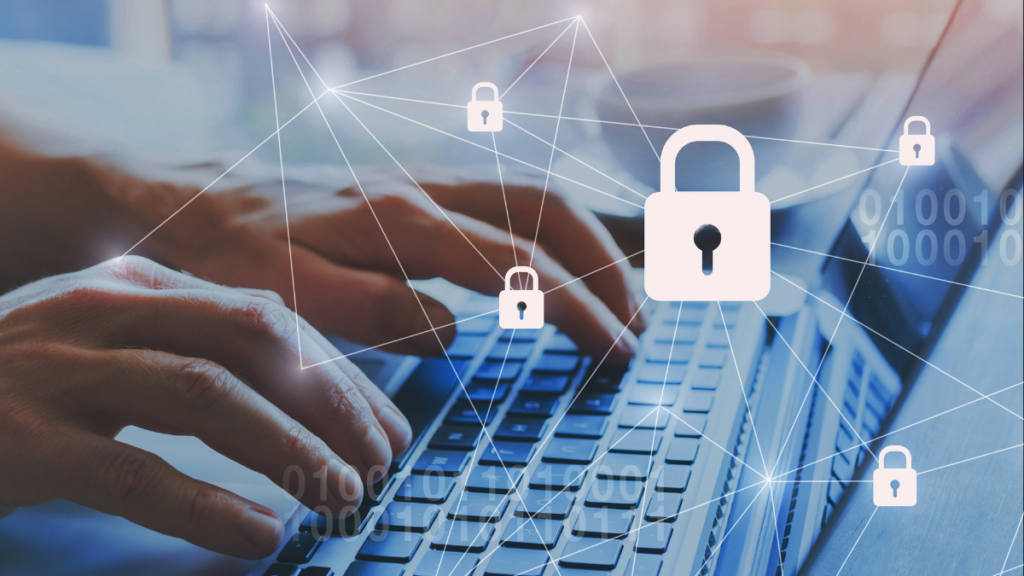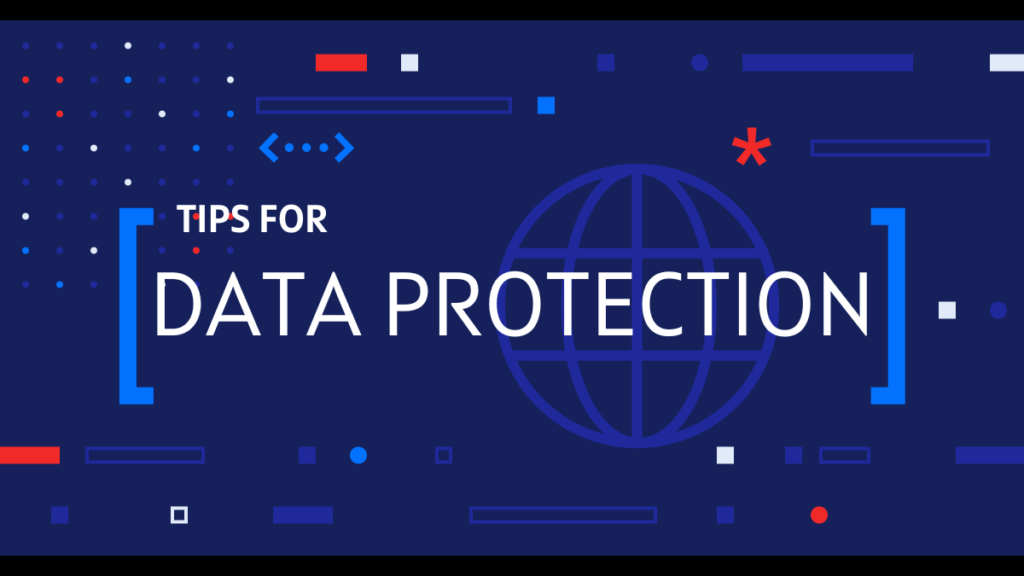Cybersecurity attacks are on the rise, so it’s critical to understand what you can do to safeguard your data online. There are several things you may do to help reduce the likelihood of an attack, even if there is no foolproof way to do so.
With each passing day, the need for increased security measures to protect our data and online activities is becoming more and more important. As technology continues to evolve, so too does the sophistication of cyber-criminals and the threats they pose.
The future of cybersecurity lies in staying one step ahead of them. In this article, we’ll discuss the current landscape of cybersecurity, explore emerging technologies, and provide tips on how you can protect your data in an increasingly connected world. So, read on for everything you need to know about securing your information in the digital age.
10 Tips for Protecting Your Data
Here are some pro tips for protecting your data in this digitally connected world:
Back up your data
As our world becomes increasingly connected, the risk of cyberattacks also increases. One way to protect your data is to regularly back up your files. This way, if your device is lost or stolen, or if you are the victim of a ransomware attack, you will still have access to your important data.
There are many different ways to back up your data. You can use an external hard drive, a cloud-based storage service, or even a USB flash drive. Whichever method you choose, be sure to encrypt your backup files for added security. Backing up your data is just one step in protecting yourself from cybersecurity threats. For more tips on staying safe online, be sure to check out our blog.
Keep your devices and your apps up-to-date
One of the best ways to protect your data is to keep your devices and apps up-to-date. Cybercriminals are constantly finding new ways to exploit vulnerabilities, and new security updates can help close those gaps.
To make sure your devices are always up-to-date, you can enable automatic updates. For most apps, you can find this setting in the app’s settings menu. For your operating system, you can usually find it in the “Update & Security” section of the Settings menu.
Enabling automatic updates is a good first step, but it’s also important to periodically check for updates manually. This way, you can be sure that all of your devices and apps are always up-to-date and protected against the latest threats.
Choose unique passwords
In a world where more and more of our lives are online, it’s important to be mindful of cybersecurity. One way to protect your data is by choosing unique passwords for each of your online accounts.
Creating strong, unique passwords can be difficult, but it’s worth the effort to keep your information safe. Here are a few tips for creating passwords that will help you stay secure:
- Use a mix of upper and lowercase letters, numbers, and symbols in your passwords.
- Avoid using easily guessed words or phrases like “password” or “1234”.
- Make your passwords at least 8 characters long. The longer the password, the harder it is to crack.
- Use a password manager to help you keep track of all your different passwords. This can be especially helpful if you have a lot of online accounts.
By following these tips, you can choose passwords that will be tough for hackers to guess and help keep your data safe in our increasingly connected world.

Turn on two-factor authentication
Two-factor authentication is a must in the future of cybersecurity. By adding an extra layer of security, you can make it much harder for hackers to access your data. Here are some tips for turning on two-factor authentication:
1. Choose a strong second factor. The second factor should be something that only you have access to, such as a fingerprint or a code sent to your phone.
2. Enable two-factor authentication for all accounts that support it. Many popular websites and services now offer two-factor authentication, so take advantage of it whenever possible.
3. Be aware of phishing attacks. Hackers may try to trick you into giving them your second factor by sending fake emails or texts that look like they’re from a trusted source. Don’t click on any links or enter any information unless you’re sure it’s legitimate.
Be creative with the answers to your account recovery questions
Most people have a hard time coming up with creative answers to their account recovery questions, let alone keeping track of them. Here are some tips to help you keep your account recovery questions safe and secure:
1. Use a different answer for each question.
2. Make your answers as long and as complicated as possible.
3. Use a combination of letters, numbers, and symbols in your answers.
4. Avoid using easily guessed words like “password” or “123456.”
5. Keep your answers confidential – don’t share them with anyone!
Avoid sensitive transactions on free WiFi
When using free wifi, it is important to be aware of the potential risks. Hackers can easily set up fake wifi hotspots in public places and use them to steal people’s personal information.
If you must use free wifi, avoid doing any sensitive transactions such as online banking or shopping. If you need to do these things, make sure you are using a secure connection (https) and that you have a firewall turned on.
It is also a good idea to use a VPN when using free wifi. A VPN encrypts your traffic and makes it much harder for hackers to snoop on your activity.
Install an antivirus and scan for viruses regularly
In a connected world, protecting your data from viruses and other malware is more important than ever. One way to do this is to install an antivirus program and scan for viruses regularly.
Many different antivirus programs are available, so it’s important to choose one that’s right for you. Some factors to consider include whether the program is free or paid, how often it updates, and how easy it is to use. Once you’ve chosen an antivirus program, install it on all your devices and keep it up to date. Scanning for viruses regularly will help ensure that your data stays safe.
Be smart about social media
As the world becomes increasingly connected, it’s important to be smart about social media. Here are a few tips for protecting your data in a connected world:
1. Be aware of the risks. Understand that anyone, anywhere in the world can see anything you post online. Be cautious about what you share, and think twice before posting anything sensitive or personal.
2. Keep your privacy settings tight. Review the privacy settings for your social media accounts and ensure only people you know and trust have access to your information.
3. Be careful about clicking on links. Don’t click on links from unknown sources; be wary of phishing scams that trick you into revealing personal information or downloading malware.
4. Use strong passwords and two-factor authentication. Choose strong passwords for all of your online accounts, and enable two-factor authentication whenever possible. This will help protect your accounts even if your password is compromised.
5. Stay up-to-date on security threats. Keep an eye out for news about new security threats and take steps to protect yourself accordingly. By staying informed, you can help keep yourself and your data safe in a connected world
Limit the personal information you give out online
In a connected world, it’s important to be aware of the types of information you’re sharing online. Cybercriminals can easily access personal information such as your name, address, and phone number. That’s why limiting the personal information you give out online is important.
Here are some tips for protecting your personal information:
- Be aware of the information you’re sharing on social media sites. Don’t post too much personal information that could be used to identify you.
- When creating accounts on websites, use a unique username and password that isn’t associated with any other online account you have.
- Be cautious about the emails you open and the links you click on. Cybercriminals can use phishing tactics to trick you into revealing personal information or downloading malware.
- Keep your software and antivirus programs up to date to help protect your computer from malware and other cybersecurity threats.
Get a credit check
Assuming you’re referring to a credit check in the context of financial security, there are a few things to keep in mind. First, get organized and know what’s out there by getting a free copy of your credit report from each of the three major credit bureaus at least once a year. Review them carefully for any errors or signs of fraud.
Next, consider freezing your credit as an extra layer of protection against identity theft. This will prevent new lines of credit from being opened in your name without your knowledge. You can still use your existing lines of credit and unfreeze your credit when you need to apply for new ones.
Finally, be vigilant about monitoring your accounts and statements for any suspicious activity. Don’t hesitate to contact your bank if you see something that doesn’t look right.
Conclusion
Protecting our data in tomorrow’s connected world will be increasingly difficult. However, by using common sense and following the cybersecurity tips in this article, we can ensure that our data stays secure as technology evolves. By remaining vigilant and educating ourselves on cyber threats and understanding how best to protect ourselves, we can come out ahead of any potential cyber-attacks.

